|
|||||||
| منتدى السيارات العام المنتدى الرئيسي بالموقع ، حيث يحتوي على كل المواضيع العامة عن السيارات نقاشات المنتدى اخبار السيارات فى مصر والخليج والعالم |
 |
|
|
أدوات الموضوع |
|
|||||||
| منتدى السيارات العام المنتدى الرئيسي بالموقع ، حيث يحتوي على كل المواضيع العامة عن السيارات نقاشات المنتدى اخبار السيارات فى مصر والخليج والعالم |
 |
|
|
أدوات الموضوع |
|
#1
|
|||||||||||||||||||||||||
|
|||||||||||||||||||||||||
  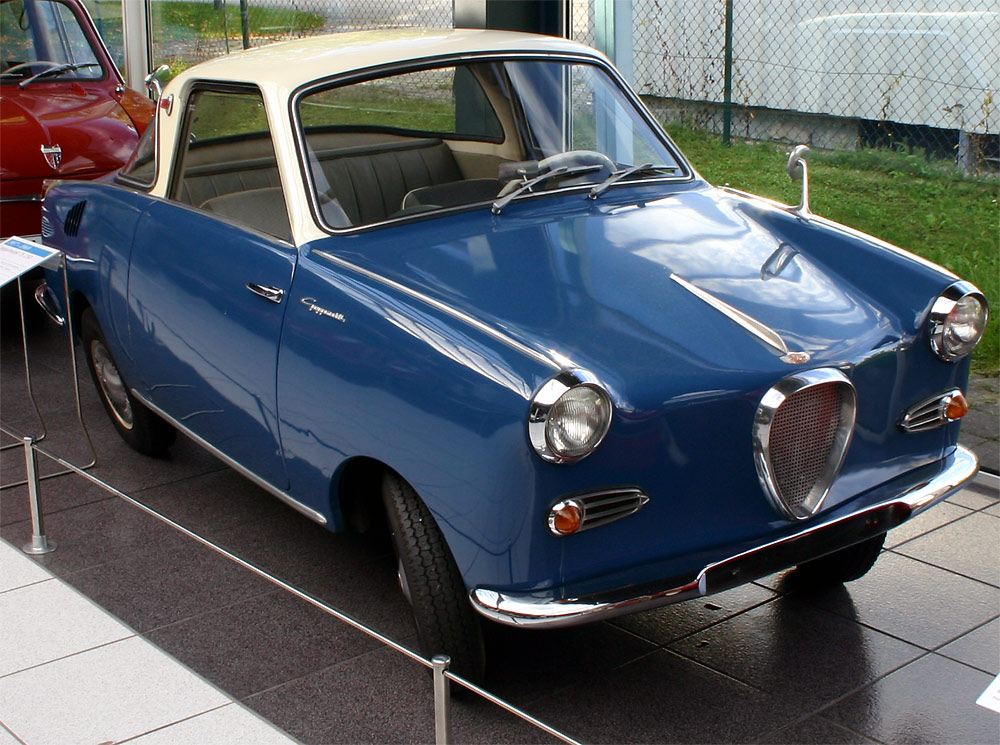 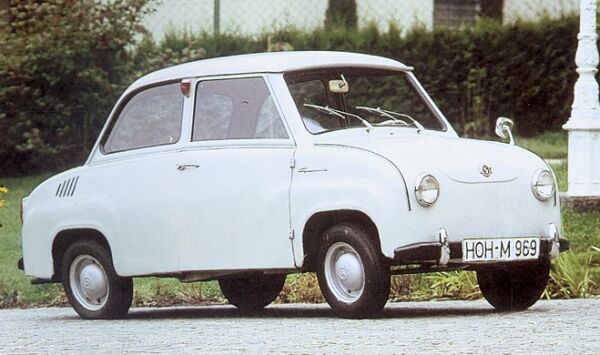     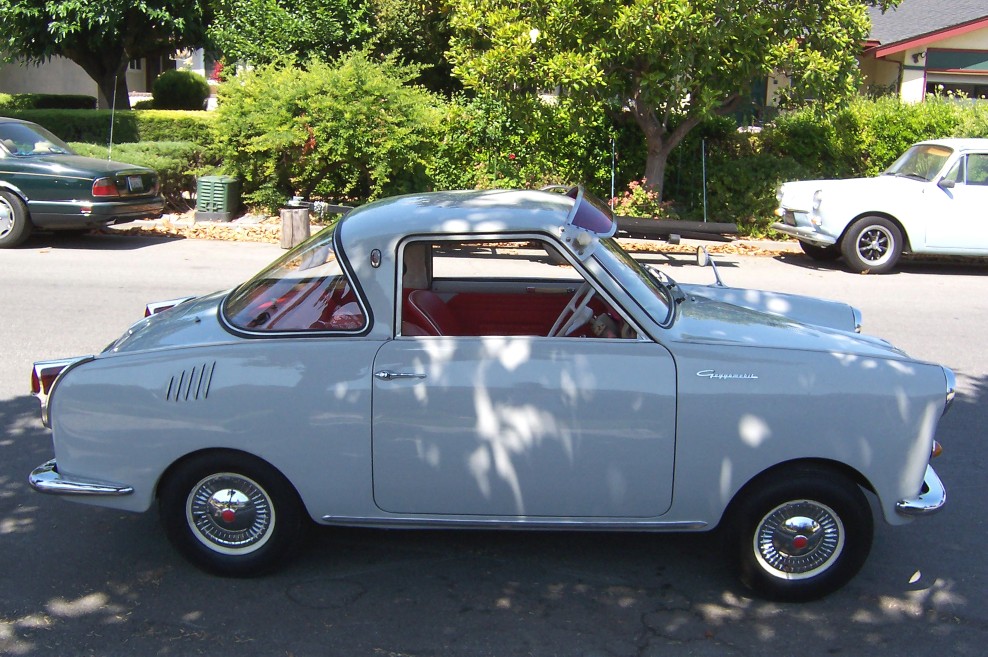    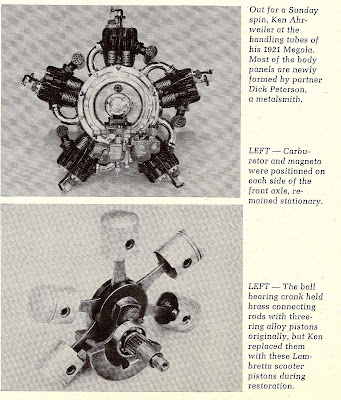    
Goggomobil was a series of Bavarian town Dingolfing after World War II by Glas. Glas produced three models on the Goggomobil platform: the Goggomobil T sedan, the Goggomobil TS coupé, and the Goggomobil TL van. The engine was an air cooled, two stroke, two cylinder unit originally displacing 250 cc, but later available in increased sizes of 300 cc and 400 cc. It had an electric pre-selective transmission built by Getrag and a manual clutch. The engine was behind the rear wheels. Suspension was independent all round using coil springs with swing axles. 214,313 sedans, 66,511 coupés, and 3,667 Transporter vans and pickups were built from 1955 to 1969. T sedan   Goggomobil T250 with suicide doors and wind-up windows. The Goggomobil T250 was introduced by Glas at the 1954 IFMA international bicycle and motorcycle show. The T250 was a conventional-looking two door sedan with a rear-mounted 245 cc air cooled two-stroke straight twin engine. Design changes were made to the T250 in 1957. Two windshield wipers were used instead of the earlier system with one wiper, and the sliding windows in the doors were changed to wind-up windows. Also at this time the T300 and T400 became available; these had larger engines of 300 cc and 400 cc respectively. The last design change for the T sedan came in 1964, when the rear-hinged suicide doors were replaced by conventional front-hinged doors. 214,313 sedans were built when production ended on 30 June 1969.[2] [edit] TS coupe   TS 250 Coupe The Goggomobil TS 2+2 coupe was introduced at the 1957 IFMA show alongside the improved T sedan. It was available as the TS250, the TS300, and the TS400, the number reflecting the approximate engine size in cubic centimeters. The only major design change to the TS coupe was the change from rear-hinged suicide doors to front-hinged conventional doors in 1964. The TS coupe was always ten to twenty percent more expensive than the T sedan. Total production of TS coupes was 66,511.[3] [edit] TS 300 specifications and performance The specifications of a 1957 Goggomobil TS 300 Coupe are:
[edit] TS 250 specifications The specifications of a 1958 Goggomobil TS 250 Coupe are:
  Goggomobil Transporter van The Goggomobil Transporter, or Goggomobil TL, was introduced at the 1956 IFMA show. The Transporter was built largely at the request of the German Federal Postal Service, which procured more than 2,000 Transporters between October 1957 and November 1965.[4] The Transporter had sliding front doors. It was available as an enclosed van with double back doors or as a pickup with a tailgate to the open bed. Transporter pickups were often used by municipal services as snow plows or street sweepers.[4][7] 3,667 Transporter vans and pickups were produced.[4] [edit] US export editions Goggomobils were exported to the United States. These were special export versions, with the 400 cc engine, an automatic gasoline-oil mixer, and 7 inch sealed headlights as required by US regulations.[2][3][8] [edit] Goggomobil Dart Main article: Goggomobil Dart   Goggomobil Dart Between 1957 and 1961 some 700 Goggomobil Darts were produced by Buckle Motors Pty Ltd in Sydney, Australia.[5] [edit] References
التعديل الأخير تم بواسطة cars admire ; 20-03-2011 الساعة 02:39 AM |
|||||||||||||||||||||||||
|
#2
|
|||
|
|||
 Messerschmitt AG (German pronunciation: [ˈmɛsɐʃmɪt]) was a famous German aircraft manufacturing corporation (AG) named for its chief designer, Willy Messerschmitt, and known primarily for its World War II fighter aircraft, notably the Bf 109 and Me 262. The company survived in the post-war era, undergoing a number of mergers and changing its name from Messerschmitt to Messerschmitt-Bölkow-Blohm before being bought by DASA in 1989, now part of EADS. In February 1916 the south German engineering company MAN AG and several banks purchased the unprofitable aircraft builder Otto-Flugzeugwerke, starting a new company Bayerische Flugzeugwerke AG. The articles of association were drawn up on February 19 and 20, and completed on March 2, 1916. Details of the company were recorded in the Commercial Register with an equity capital of RM 1,000,000 on March 7, 1916. 36% of the capital was provided by the Bank für Handel und Industrie, Berlin, 30% by MAN AG and 34% by Hermann Bachstein, Berlin. The first Chairman of the Board of Management was Peter Eberwein, who had previously been employed at Albatros Flugzeugwerke. Due to the need for immediate aircraft production for the ongoing war, there was no time for development work and BFW manufactured aircraft under license from the Albatros Flugzeugwerke. Within a month of being set up the company was able to supply aircraft to the war ministries of Prussia and Bavaria. However, major quality problems were encountered at the start. The German air crews frequently complained about the serious defects that appeared in the first machines from BFW. The same thing had happened with the aircraft from the predecessor company run by Gustav Otto. It was only organizational changes and more intensive supervision of the assembly line that succeeded in resolving these problems by the end of 1916. BFW then started turning out over 200 aircraft a month, with their workforce growing to 3,000 and becoming one of the largest aircraft manufacturers in Bavaria. The end of the war hit BFW hard, since military demand for aircraft collapsed. The company’s management were forced to look for new products with which to maintain their position in the market. Since WWI aircraft were largely built from wood to keep their weight down, BFW was equipped with the very latest joinery plant. What is more, the company still held stocks of materials sufficient for about 200 aircraft, and worth 4.7 million reichsmarks. It therefore seemed a good idea to use both the machinery and the materials for the production of furniture and fitted kitchens. In addition, from 1921 onwards, the company manufactured motorcycles of its own design under the names of Flink and Helios. In the autumn of 1921 the Austrian financier Camillo Castiglioni first announced his interest in purchasing BFW. While most of the shareholders accepted his offer, MAN AG initially held on to its shareholding in BFW. But Castiglioni wanted to acquire all the shares. He was supported in this by BMW’s Managing Director Franz Josef Popp who, in a letter to the chairman of MAN, described BFW as a “dead factory, which possesses no plant worth mentioning, and consists very largely of dilapidated and unsuitable wooden sheds situated in a town that is extremely unfavorable for industrial activities and whose status continues to give little cause for enthusiasm”. Apparently Popp was still in close contact with Castiglioni and was perhaps even privy to the latter’s plans for merging BMW with BFW. It was probably in the spring of 1922 that Castiglioni and Popp persuaded MAN to give up its shares in BFW, so that now the company belonged exclusively to Castiglioni. Then in May of the same year, when the Italian-born investor was able to acquire BMW’s engine business from Knorr-Bremse AG, nothing more stood in the way of a merger between the aircraft company BFW and the engine builders BMW. [edit] Reincarnation Bayerische Flugzeugwerke (BFW) (Bavarian Aircraft Works) was reformed in 1926 in Augsburg, Bavaria when Udet-Flugzeugbau GmbH was changed into a joint-stock company. In the early stages, BMW AG held a stake in this company and was represented by Josef Popp, who held a place on the Supervisory Board.[1] Willy Messerschmitt joined the company in 1927 as chief designer and engineer, and formed a design team. One of the first designs, the Messerschmitt M20, was a near-catastrophe for the designer and the company. Many of the prototypes crashed, one of them killing Hans Hackman, a close friend of Erhard Milch, the head of Lufthansa and the German civil aviation authorities. Milch was upset by the lack of response from Messerschmitt and this led to a lifelong hatred towards him. Milch eventually cancelled all contracts with Messerschmitt and forced BFW into bankruptcy in 1931. However, the German re-armament programs and Messerschmitt's friendship with Hugo Junkers prevented a stagnation of the careers of him and BFW, which was started again in 1933. Milch still prevented Messerschmitt's takeover of the BFW until 1938, hence the designation "Bf" of early Messerschmitt designs. Messerschmitt promoted a concept he called "light weight construction" in which many typically separate load-bearing parts were merged into a single reinforced firewall, thereby saving weight and improving performance. The first true test of the concept was in the Bf 108 Taifun sports-plane, which would soon be setting all sorts of records. Based on this performance the company was invited to submit a design for the Luftwaffe's 1935 fighter contest, winning it with the Bf 109, based on the same construction methods. From this point on Messerschmitt became a favorite of the Nazi party, as much for his designs as his political abilities and the factory location in southern Germany away from the "clumping" of aviation firms on the northern coast. BFW was reconstituted as Messerschmitt AG on July 11, 1938, with Willy Messerschmitt as chairman and managing director. The renaming of BFW resulted in the company's RLM designation changing from Bf to Me for all newer designs that were accepted by the RLM after the acquisition date. Existing types, such as the Bf 109 and 110, retained their earlier designation in official documents, although sometimes the newer designations were used (in error) as well, most often by subcontractors, such as Erla Flugzeugwerke of Leipzig. In practise, all BFW/Messerschmitt aircraft from the Bf 108 four-seat touring monoplane, to the Bf 163 light observation aircraft (not the same plane as the later Me 163 rocket fighter) were prefixed Bf, all later types with Me. [edit] World War II During the war Messerschmitt became a major design supplier, their Bf 109 and Bf 110 forming the vast majority of fighter strength for the first half of the war. Several other designs were also ordered, including the enormous Me 321 Gigant transport glider, and its six-engined follow on, the Me 323. However for the second half of the war, Messerschmitt turned almost entirely to jet-powered designs, producing the World's first operational jet fighter, the Me 262 Schwalbe (“Swallow”). They also produced the DFS-designed Me 163 Komet, the first rocket-powered design to enter service. Messerschmitt had its share of poor designs as well; the Me 210, designed as a follow-on to the 110, was a disaster that almost led to the forced dissolution of the company. The design problems were eventually addressed in the Me 410 Hornisse, but only small numbers were built before all attention turned to the 262. Late in the war, Messerschmitt also worked on a heavy Amerikabomber design, the Me 264, which flew in prototype form but was too late to see combat. [edit] Post-war After World War II, the company was not allowed to produce aircraft. One alternative the company came up with was the three wheeled motorcycle/KR175 / KR200, which was designed by an aircraft engineer Fritz Fend. The cars were actually made by Fend's own company in the Messerschmitt works at Regensburg and Willy Messerschmitt had very little to do with the vehicles other than ruling that they carried his name. Production of the KR200 ceased in 1964. Less known is the fact that the Messerschmitt factory also produced prefabricated houses, which were designed as "self-building-kits" mainly based on an alloy frame work. [edit] Return to aviation On 6 June 1968, Messerschmitt AG merged with the small civil engineering and civil aviation firm Bölkow, becoming Messerschmitt-Bölkow. The following May, the firm acquired Hamburger Flugzeugbau (HFB), the aviation division of Blohm + Voss. The company then changed its name to Messerschmitt-Bölkow-Blohm (MBB). In 1989 MBB was taken over by Deutsche Aerospace AG (DASA), which was renamed Daimler-Benz Aerospace in 1995. The former DASA now operates as "EADS Germany".[2]     Messerschmitt TG500 Tiger engine   : 14369D~149: : 14369D~149:
|
|
#3
|
|||
|
|||
|
peel p50
 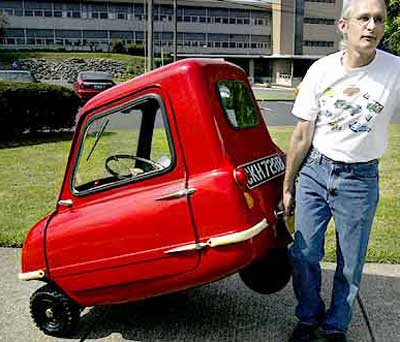    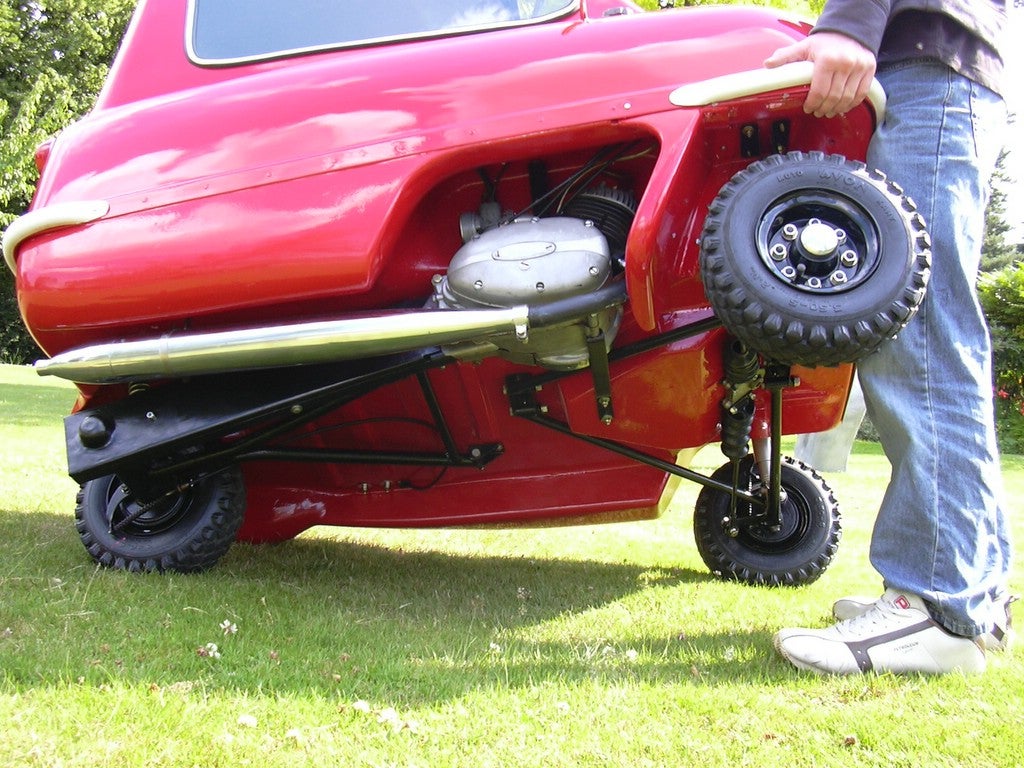   the P50 is much smaller! So small, in fact, that the Guiness Book of World Records recognizes it as the smallest car ever produced. how many miles to the gallon do you get? This bad boy got 100 miles per gallon! The P50 has a single-cylinder 49cc engine and only three wheels… technically, it’s not even a car (they classified it as a motorcycle). Only about 100 were made, so if you get a chance to see one, you go and you take that chance.        1964_Peel_Viking   Peel Microcars - The site for peel microcars built in the isle of man The Peel P50 is a three-wheeled Peel Engineering Company on the Isle of Man. It retailed for £199 when new (1963 Model), and currently holds the record for the smallest-ever automobile to go into production. Designed as a [3] and with an unladen weight of 59 kilograms (130 lb), the P50 holds the record as the smallest ever to go into production.[3] [edit] 1962-66 The P50 used a 49 cc (3.0 cu in) DKW engine which gave it a top speed of approximately 61 kilometres per hour (38 mph), and was equipped with a three-speed manual transmission that had no reverse gear. Consequently, turning in a confined area could only be achieved by pushing, or lifting the car using the handle on the rear and physically pulling it round. The makers and users claim fuel consumption of 100 mpg-imp (2.8 L/100 km; 83 mpg-US). At least one prototype, the Peel P55 Saloon Scooter, has also survived. Unlike the production Peel P50 (along with all developments and replicas thereof), this prototype used the less stable layout of a single wheel at the front and two at the back. Approximately 50 Peel P50s were sold at £199 each. [edit] 2011 The 2011 petrol variant utilizes a 49cc, 2.5 KW (3.35 HP) gasoline Four-stroke engine and Continuously variable transmission with reverse. A 12 volt electrical system powers the electric starter, lights and windshield wiper. Speed is usually restricted from the factory at 45 km/h (28 mph) by a computerized system, but can be increased at the buyers request Peel microcars were built in Peel, Isle of Man in the 1960's by Peel Engineering. Owner designer Cyril Cannell and his workforce led by George Gelling created these cars in premises close to peel harbour. Peel Engineering was at the forefront of glass fibre and plastics moulding technology, famous for its motorcycle racing fairings and boat-building expertise. This site is dedicated mainly to the Peel P50 and Peel Trident, but also includes information on the Manxcar, Prototypes, Viking Minisport, P1000 and replicas.  Peel P50  Peel Trident  Peel P50 Prototype      : 14369D~149: : 14369D~149:
|
|
#4
|
|||
|
|||
|
|
|
#5
|
|||
|
|||
|
هو انت غاوي صقعه مره روسيا ومره المانيا سقعتنا معاك مافيش حته دفا كده علي ما قوسم
|
 |
| الكلمات الدليلية |
| goggomobil& messerschmitt |
| أدوات الموضوع | |
|
|